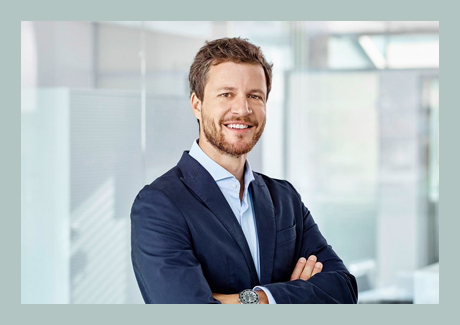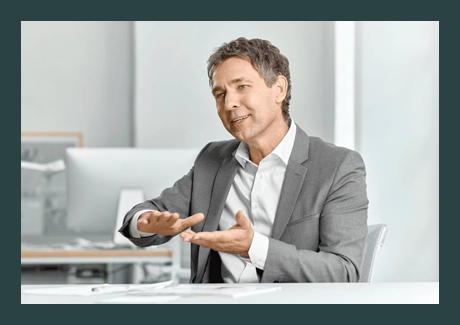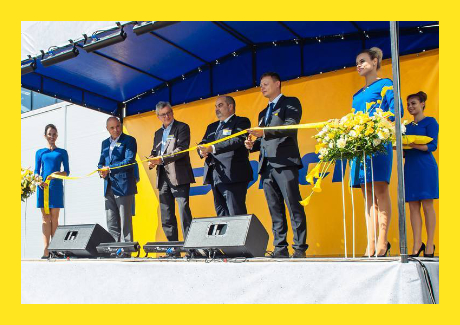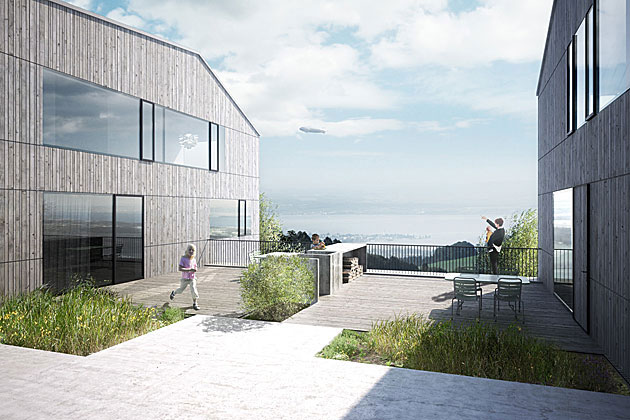ATP architects engineers
A Culture Change in the Planning Process: Interview with Albert Achammer
ATP relies on integrated cooperation to ensure taxonomy-compliant design.
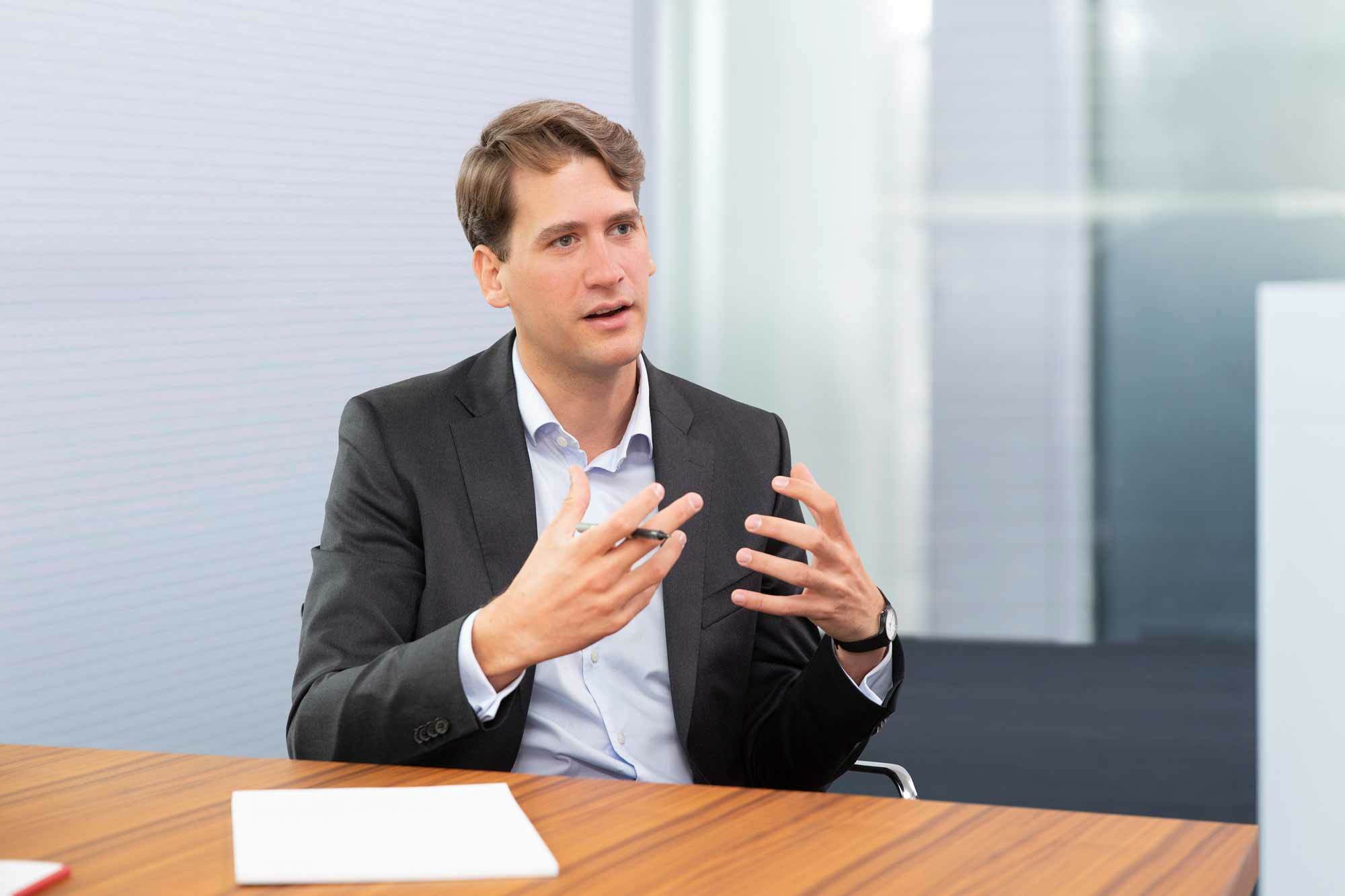
Interview with Albert Achammer, Managing Director ATP Hamburg. Photo: ATP/Rauschmeir
“We want to change the world for the better with our buildings”. The corporate vision of ATP architects engineers sets the tone for the 1,000+ employees of the company’s 11 offices in the DACH and CEE Regions. The key success factor of Europe’s leading integrated design office1) is the strict methodology of its BIM-supported, interdisciplinary cooperation between architects and engineers – with its clear focus on sustainability and saving resources.
In this interview, Albert Achammer, Architect ETH and Managing Director of ATP Hamburg, ATP’s newest German office, talks about the ATP Green Deal and about a long overdue culture change in designing and building.
1) BD online, Top 100, 2021, 1st place in Europe
How far has the building industry advanced in the area of sustainability?
The declared objective of the large-scale decarbonization of the global economy and, hence, a reduction in CO2 emissions of between 80 and 95 % by 2050, compels the building industry in particular to rethink and to adopt new, environmentally-friendlier solutions. All actors have the responsibility to (finally) break new, innovative ground in the spirit of climate protection. We urgently need more courage to embrace change and more willingness to cooperate. Particularly due to the fact that construction is not only one of the largest sectors of the economy but also, unfortunately, one of the largest producers of CO2 emissions.
As a designer, what contribution can you make to this process?
As the client’s strategic partners, we in the planning team have a huge responsibility, because the course is set long before the diggers start work. As designers, we must encourage our clients to combine the economic objectives of a building project with other aspects of sustainability, such as healthy living and working conditions, an intact environment and avoiding waste and saving resources across the entire building lifecycle. For, at the end of the day, ecological and socio-cultural sustainability directly influence the economic sustainability of our buildings.
This means that you still have a lot of persuading to do?
I don’t think so. Most clients are already well aware of this and, since last year at the latest, EU Taxonomy has been a significant factor across the real estate sector. A much more important aspect is the professionalism with which we address this subject with our clients and offer them holistic support. For some time, for example, each of our offices has employed sustainability experts who, in close cooperation with our research and specialist design company ATP sustain, play an active role in our integrated design teams from day one of every project. As part of our ATP Green Deal, we have developed special packages of measures, with which we accompany our clients through the entire design and construction phase. We are able to provide this service because we have an ATP-wide network of design specialists, who are used to working cooperatively as they overcome challenges on behalf of our clients.
How does one successfully design a sustainable building?
We are convinced that, with our holistic thinking and proactive planning, we architects and engineers can and – above all – must positively influence the built environment. This is why we at ATP started, as far back as the 1970s, a process of internal cultural change designed to address the widespread wastage of both time and resources in designing and building. Over the course of the past 45 years, we have developed a European form of integrated design in which all participants in the design process work on a project from the very start – as equals, interdisciplinarily, simultaneously and, since 2012, digitally with BIM, in every project. The experience has been excellent and we are convinced that this is not only the right approach for the future but also an absolute prerequisite for maximum quality in the entire design, construction and operation process. The output of this process is sustainable buildings that are based on truly interdisciplinary cooperation.
How does integrated design work in practice?
Integrated design is not only a way of working but also an attitude. It starts in the mind. We reject the silo thinking of the individual disciplines and work side-by-side from the very start to integrate all participants in the design process, including the client and other stakeholders, at an early stage. As we have organized our offices to optimize integrated cooperation, knowledge is constantly shared amongst our employees and this improves cooperation in our project teams even more. In terms of working methods, we will soon mark ten years as a pioneer in the field of digital planning (BIM) and we continue to develop the necessary applications with our IT experts. This means that we can, for example, analyze a building in its early design phase with the help of its “digital twin” and simulate measures that will significantly improve its energy efficiency and environmental friendliness. We can deliver our client the bases for making decisions about, for example, potential savings across an entire building lifecycle – at a very early stage. As a result, architects and structural and building services engineers also enjoy much earlier access to dependable data that will help them to make design decisions. The objective of digital integrated design is to increase the quality of a building while simultaneously reducing waste in all processes. We want to drastically minimize the consumption of resources and work to ensure real CO2 neutrality in the construction and operation of buildings.
In your opinion, which measures could offer further support to colleagues in the sector?
In future, the growing global shortage of valuable building materials will force us to think much more about the circular economy. For the smart reutilization and recycling of building products and materials are key contributors to the reduction of CO2 emissions. Rather than becoming clusters of contaminated materials, buildings should be used as “raw materials stores”. The future surely belongs to demountable and recyclable buildings made from environmentally-friendly materials. In addition to the basic research into reusable building materials that it carries out together with product manufacturers, ATP supports partners such as Madaster Germany, a platform that registers and documents the materials, products and elements in buildings. This allows us to act as an ambassador for a circular economy and, as an integrated design office that actively uses Madaster’s register, to implement a measure that concretely protects the climate.
You want to interview Albert Achammer? Please contact: [email protected]
In this interview, Albert Achammer, Architect ETH and Managing Director of ATP Hamburg, ATP’s newest German office, talks about the ATP Green Deal and about a long overdue culture change in designing and building.
1) BD online, Top 100, 2021, 1st place in Europe
How far has the building industry advanced in the area of sustainability?
The declared objective of the large-scale decarbonization of the global economy and, hence, a reduction in CO2 emissions of between 80 and 95 % by 2050, compels the building industry in particular to rethink and to adopt new, environmentally-friendlier solutions. All actors have the responsibility to (finally) break new, innovative ground in the spirit of climate protection. We urgently need more courage to embrace change and more willingness to cooperate. Particularly due to the fact that construction is not only one of the largest sectors of the economy but also, unfortunately, one of the largest producers of CO2 emissions.
As a designer, what contribution can you make to this process?
As the client’s strategic partners, we in the planning team have a huge responsibility, because the course is set long before the diggers start work. As designers, we must encourage our clients to combine the economic objectives of a building project with other aspects of sustainability, such as healthy living and working conditions, an intact environment and avoiding waste and saving resources across the entire building lifecycle. For, at the end of the day, ecological and socio-cultural sustainability directly influence the economic sustainability of our buildings.
This means that you still have a lot of persuading to do?
I don’t think so. Most clients are already well aware of this and, since last year at the latest, EU Taxonomy has been a significant factor across the real estate sector. A much more important aspect is the professionalism with which we address this subject with our clients and offer them holistic support. For some time, for example, each of our offices has employed sustainability experts who, in close cooperation with our research and specialist design company ATP sustain, play an active role in our integrated design teams from day one of every project. As part of our ATP Green Deal, we have developed special packages of measures, with which we accompany our clients through the entire design and construction phase. We are able to provide this service because we have an ATP-wide network of design specialists, who are used to working cooperatively as they overcome challenges on behalf of our clients.
How does one successfully design a sustainable building?
We are convinced that, with our holistic thinking and proactive planning, we architects and engineers can and – above all – must positively influence the built environment. This is why we at ATP started, as far back as the 1970s, a process of internal cultural change designed to address the widespread wastage of both time and resources in designing and building. Over the course of the past 45 years, we have developed a European form of integrated design in which all participants in the design process work on a project from the very start – as equals, interdisciplinarily, simultaneously and, since 2012, digitally with BIM, in every project. The experience has been excellent and we are convinced that this is not only the right approach for the future but also an absolute prerequisite for maximum quality in the entire design, construction and operation process. The output of this process is sustainable buildings that are based on truly interdisciplinary cooperation.
How does integrated design work in practice?
Integrated design is not only a way of working but also an attitude. It starts in the mind. We reject the silo thinking of the individual disciplines and work side-by-side from the very start to integrate all participants in the design process, including the client and other stakeholders, at an early stage. As we have organized our offices to optimize integrated cooperation, knowledge is constantly shared amongst our employees and this improves cooperation in our project teams even more. In terms of working methods, we will soon mark ten years as a pioneer in the field of digital planning (BIM) and we continue to develop the necessary applications with our IT experts. This means that we can, for example, analyze a building in its early design phase with the help of its “digital twin” and simulate measures that will significantly improve its energy efficiency and environmental friendliness. We can deliver our client the bases for making decisions about, for example, potential savings across an entire building lifecycle – at a very early stage. As a result, architects and structural and building services engineers also enjoy much earlier access to dependable data that will help them to make design decisions. The objective of digital integrated design is to increase the quality of a building while simultaneously reducing waste in all processes. We want to drastically minimize the consumption of resources and work to ensure real CO2 neutrality in the construction and operation of buildings.
In your opinion, which measures could offer further support to colleagues in the sector?
In future, the growing global shortage of valuable building materials will force us to think much more about the circular economy. For the smart reutilization and recycling of building products and materials are key contributors to the reduction of CO2 emissions. Rather than becoming clusters of contaminated materials, buildings should be used as “raw materials stores”. The future surely belongs to demountable and recyclable buildings made from environmentally-friendly materials. In addition to the basic research into reusable building materials that it carries out together with product manufacturers, ATP supports partners such as Madaster Germany, a platform that registers and documents the materials, products and elements in buildings. This allows us to act as an ambassador for a circular economy and, as an integrated design office that actively uses Madaster’s register, to implement a measure that concretely protects the climate.
You want to interview Albert Achammer? Please contact: [email protected]

